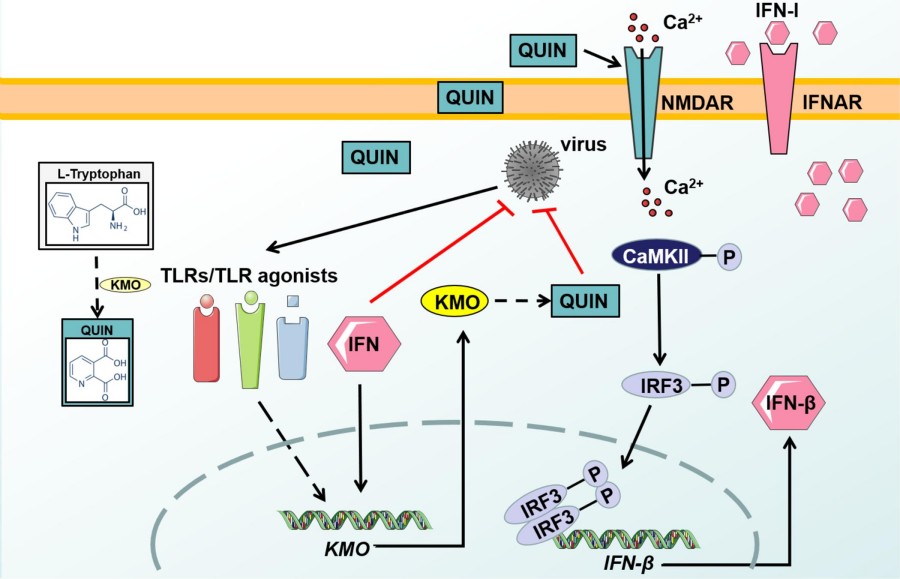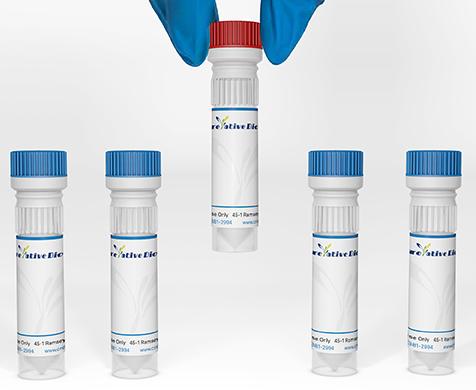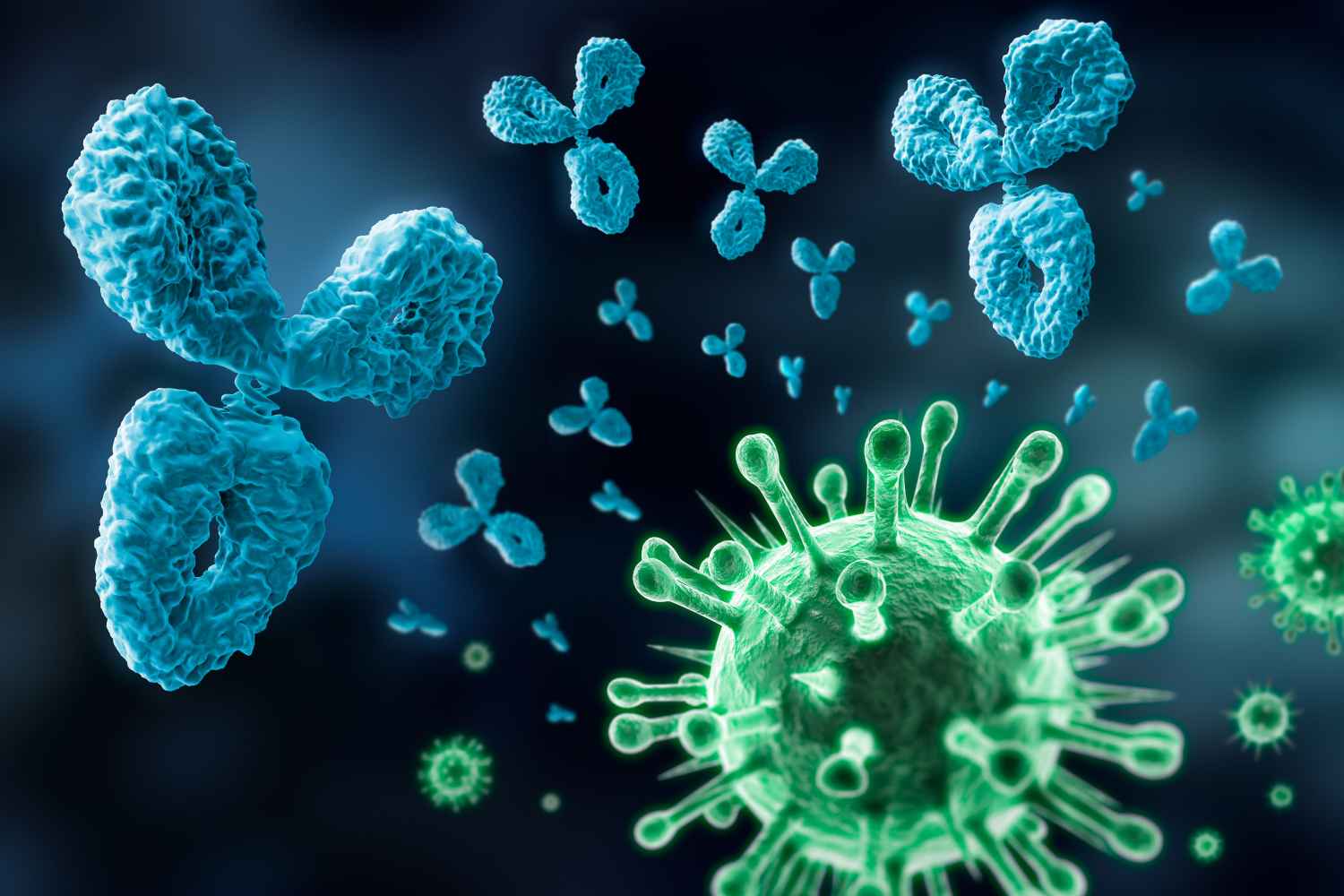KMO Antibodies
Background
KMO is a flavin protease existing in the outer mitochondrial membrane, mainly distributed in tissues such as the liver and brain. This enzyme catalyzes a key step in the tryptophan metabolic pathway, converting kynuurine to 3-hydroxykynuurine, thereby influencing neurotransmitter synthesis and immune regulation processes. Patients with mental disorders often exhibit abnormal KMO activity, which makes it a potential therapeutic target. This enzyme was first identified in the 1970s. Its crystal structure was analyzed by X-ray diffraction technology in 2013, revealing its substrate binding sites and catalytic mechanism. The in-depth research of KMO has provided important clues for understanding the molecular mechanisms of neurodegenerative diseases, inflammatory responses and mental disorders, and has promoted the progress of related drug development fields.
Structure of KMO
KMO is a flavin-dependent monooxygenase with a molecular weight of approximately 50-55 kDa, and its precise molecular weight varies slightly among species.
| Species | Human | Mice | Rats |
| Molecular Weight (kDa) | 16.7 | 16.9 | 16.8 |
| Primary Structural Differences | Conservative FAD binding domain | Slightly high catalytic efficiency | Minor variations in the substrate binding region |
KMO is composed of 486 amino acids and has a typical mitochondrial outer membrane protein structure. Its tertiary structure consists of an FAD (flavin adenine dinucleotide) binding domain and an NADPH binding domain, which together form the catalytic active center. Enzyme activity depends on FAD cofactors, which give it characteristic flavoprotein properties.
 Fig. 1 A schematic illustrating KMO and its enzymatic product QUIN exerted a novel broadly antiviral function.1
Fig. 1 A schematic illustrating KMO and its enzymatic product QUIN exerted a novel broadly antiviral function.1
Key structural properties of KMO:
- Conserved substrate binding pocket: responsible for the specific recognition of kynurenine
- Transmembrane helical structure: Mediates mitochondrial outer membrane anchoring
- Dimerization interface: Affects enzyme activity and stability
Functions of KMO
KMO is a key enzyme in the tryptophan metabolic pathway, whose main function is to catalyze the conversion of kynuurine to 3-hydroxykynuurine, and it also participates in multiple neural and immune regulatory processes.
| Function | Description |
| Neurometabolic regulation | Catalyze the hydroxylation reaction of kynurenine, affecting the balance of neurotransmitters and the generation of neuroprotective/neurotoxic substances. |
| Immune regulation | By regulating the ratio of quinolinic acid to canine uric acid, it participates in inflammatory responses and immune responses. |
| Oxidative stress response | Reactive oxygen species (ROS) are produced during metabolism and are closely related to the REDOX state of cells. |
| Association with mental illness | The active anomaly and the pathogenesis of depression, schizophrenia and other mental disorders. |
| Drug development targets | As a potential target for the treatment of neurodegenerative diseases and inflammatory diseases, it has received extensive attention. |
The catalytic reaction of KMO exhibits typical dual-substrate kinetic characteristics (requiring simultaneous binding of kynurenine and NADPH), and its enzymatic activity is jointly regulated by substrate concentration, mitochondrial functional status and genetic polymorphism. Unlike other enzymes in the tryptophan metabolic pathway (such as IDO and TDO), the specific inhibitors of KMO can selectively change the direction of metabolic flow and have significant therapeutic application value.
Applications of KMO and KMO Antibody in Literature
1. Liao, Fu-Jun, et al. "Identification and experimental validation of KMO as a critical immune-associated mitochondrial gene in unstable atherosclerotic plaque." Journal of Translational Medicine 22.1 (2024): 668. https://doi.org/10.1186/s12967-024-05464-5
Research has found that the mitochondrial-related gene KMO is closely related to macrophage infiltration and the stability of atherosclerotic plaques. KMO is significantly highly expressed in vulnerable plaques. Its silencing can alleviate plaque formation in mice and enhance stability, indicating that KMO can serve as a potential biomarker for diagnosing plaque instability.
2. Jin, Haojie, et al. "Prognostic significance of kynurenine 3-monooxygenase and effects on proliferation, migration and invasion of human hepatocellular carcinoma." Scientific reports 5.1 (2015): 10466. https://doi.org/10.1038/srep10466
Research has found that KMO is highly expressed in hepatocellular carcinoma (HCC) and is associated with a poor prognosis for patients. KMO promotes the proliferation, migration and invasion of HCC cells and can be used as a novel prognostic marker for HCC.
3. Danquah, Bright D., et al. "Mass Spectrometric analysis of antibody—Epitope peptide complex dissociation: Theoretical concept and practical procedure of binding strength characterization." Molecules 25.20 (2020): 4776. https://doi.org/10.1371/journal.ppat.1010366
Research has found that KMO and its metabolite quinolinic acid (QUIN) promote the production of type I interferons by activating the NMDAR-CaMKII-IRF3 pathway, exerting broad-spectrum antiviral effects on multiple viruses and providing a new strategy for antiviral treatment.
4. Wang, Yu, et al. "Circular RNA SCMH1 suppresses KMO expression to inhibit mitophagy and promote functional recovery following stroke." Theranostics 14.19 (2024): 7292. https://doi.org/10.7150/thno.99323
Research has found that brain-targeted delivery of circSCMH1 can promote mitochondrial fusion and reduce mitochondrial autophagy by inhibiting KMO expression, thereby improving neural repair after ischemic stroke and providing a new target for stroke treatment.
5. Lassiter, Randi, et al. "Protective role of kynurenine 3-monooxygenase in allograft rejection and tubular injury in kidney transplantation." Frontiers in immunology 12 (2021): 671025. https://doi.org/10.3389/fimmu.2021.671025
Studies have found that the expression of KMO is significantly reduced in renal transplant rejection. Its metabolites, 3HK/3HAA, can protect renal tubular epithelial cells by enhancing the expression of Bcl-xL and TJP1 and inhibit T cell proliferation, providing a new therapeutic strategy for improving transplant rejection.
Creative Biolabs: KMO Antibodies for Research
Creative Biolabs specializes in the production of high-quality KMO antibodies for research and industrial applications. Our portfolio includes monoclonal antibodies tailored for ELISA, Flow Cytometry, Western blot, immunohistochemistry, and other diagnostic methodologies.
- Custom KMO Antibody Development: Tailor-made solutions to meet specific research requirements.
- Bulk Production: Large-scale antibody manufacturing for industry partners.
- Technical Support: Expert consultation for protocol optimization and troubleshooting.
- Aliquoting Services: Conveniently sized aliquots for long-term storage and consistent experimental outcomes.
For more details on our KMO antibodies, custom preparations, or technical support, contact us at please contact us.
Reference
- Zhao, Jin, et al. "Kynurenine-3-monooxygenase (KMO) broadly inhibits viral infections via triggering NMDAR/Ca2+ influx and CaMKII/IRF3-mediated IFN-β production." PLoS Pathogens 18.3 (2022): e1010366. https://doi.org/10.1371/journal.ppat.1010366
Anti-KMO antibodies
 Loading...
Loading...
Hot products 
-
Mouse Anti-CD164 Recombinant Antibody (CBFYC-0077) (CBMAB-C0086-FY)

-
Mouse Anti-BPGM Recombinant Antibody (CBYY-1806) (CBMAB-2155-YY)

-
Mouse Anti-DLC1 Recombinant Antibody (D1009) (CBMAB-D1009-YC)

-
Mouse Anti-BACE1 Recombinant Antibody (CBLNB-121) (CBMAB-1180-CN)

-
Mouse Anti-AMH Recombinant Antibody (5/6) (CBMAB-A2527-YC)

-
Rabbit Anti-CCL5 Recombinant Antibody (R0437) (CBMAB-R0437-CN)

-
Mouse Anti-DMD Recombinant Antibody (D1190) (CBMAB-D1190-YC)

-
Rat Anti-CD34 Recombinant Antibody (MEC 14.7) (CBMAB-C10196-LY)

-
Mouse Anti-APC Recombinant Antibody (CBYC-A661) (CBMAB-A3036-YC)

-
Mouse Anti-APP Recombinant Antibody (5C2A1) (CBMAB-A3314-YC)

-
Rabbit Anti-Acetyl-Histone H4 (Lys16) Recombinant Antibody (V2-623415) (CBMAB-CP1021-LY)

-
Mouse Anti-CD1C Recombinant Antibody (L161) (CBMAB-C2173-CQ)

-
Rabbit Anti-ABL1 (Phosphorylated Y245) Recombinant Antibody (V2-505716) (PTM-CBMAB-0465LY)

-
Rabbit Anti-DLK1 Recombinant Antibody (9D8) (CBMAB-D1061-YC)

-
Mouse Anti-ARSA Recombinant Antibody (CBYC-A799) (CBMAB-A3679-YC)

-
Mouse Anti-AGK Recombinant Antibody (V2-258056) (CBMAB-M0989-FY)

-
Mouse Anti-EPO Recombinant Antibody (CBFYR0196) (CBMAB-R0196-FY)

-
Mouse Anti-CALR Recombinant Antibody (CBFYC-0763) (CBMAB-C0818-FY)

-
Mouse Anti-BCL6 Recombinant Antibody (CBYY-0442) (CBMAB-0445-YY)

-
Mouse Anti-AGO2 Recombinant Antibody (V2-634169) (CBMAB-AP203LY)

- AActivation
- AGAgonist
- APApoptosis
- BBlocking
- BABioassay
- BIBioimaging
- CImmunohistochemistry-Frozen Sections
- CIChromatin Immunoprecipitation
- CTCytotoxicity
- CSCostimulation
- DDepletion
- DBDot Blot
- EELISA
- ECELISA(Cap)
- EDELISA(Det)
- ESELISpot
- EMElectron Microscopy
- FFlow Cytometry
- FNFunction Assay
- GSGel Supershift
- IInhibition
- IAEnzyme Immunoassay
- ICImmunocytochemistry
- IDImmunodiffusion
- IEImmunoelectrophoresis
- IFImmunofluorescence
- IGImmunochromatography
- IHImmunohistochemistry
- IMImmunomicroscopy
- IOImmunoassay
- IPImmunoprecipitation
- ISIntracellular Staining for Flow Cytometry
- LALuminex Assay
- LFLateral Flow Immunoassay
- MMicroarray
- MCMass Cytometry/CyTOF
- MDMeDIP
- MSElectrophoretic Mobility Shift Assay
- NNeutralization
- PImmunohistologyp-Paraffin Sections
- PAPeptide Array
- PEPeptide ELISA
- PLProximity Ligation Assay
- RRadioimmunoassay
- SStimulation
- SESandwich ELISA
- SHIn situ hybridization
- TCTissue Culture
- WBWestern Blot








